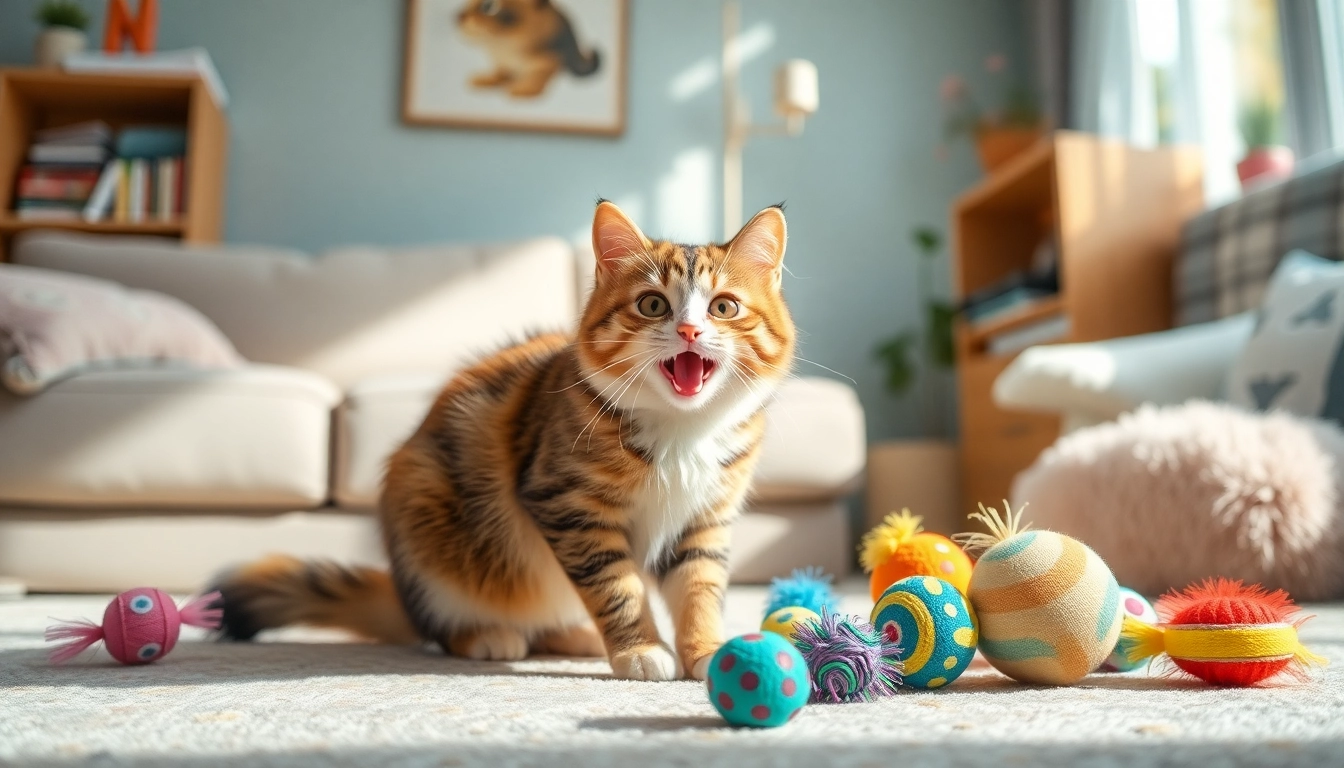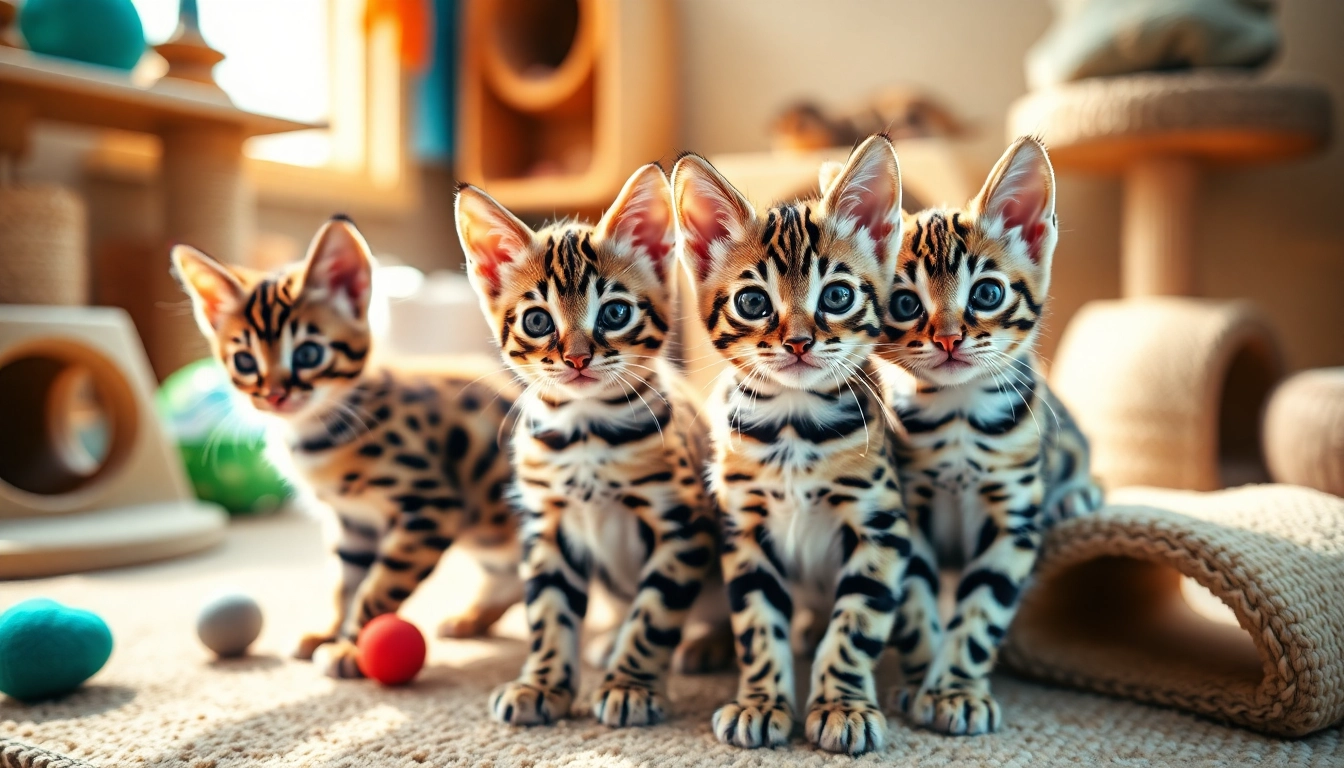Engaging your feline friend in play is essential not only for their physical well-being but also for their mental health. In this comprehensive guide, we’ll explore the dynamics of cat behavior, how to select the right toys, and even create some fun DIY options. Discover interactive games, age-old classics, and ultimately help you foster a strong bond with your fur baby while ensuring their playtime is entertaining and productive. If you’re searching for exciting activities, Visit Here for expert insights.
Understanding Your Cat’s Play Behavior
The Importance of Play for Cats
Play is a vital aspect of a cat’s life. It allows them to utilize their natural instincts. In the wild, cats hunt, stalk, and pounce on their prey, and these behaviors are mirrored in play. Engaging in play helps cats relieve stress and pent-up energy, preventing behavioral problems that can arise from boredom or frustration. Additionally, play is an opportunity for indoor cats to engage in exercise, decreasing the risk of obesity-related health issues.
Identifying Playful Behaviors
Cats exhibit several playful behaviors that serve as indicators of their engagement. These behaviors include pouncing, chasing, batting at objects, and ambushing from hiding spots. Observe your cat’s body language during playtime—dilated pupils, twitching tails, and playful growls are all positive signs. Furthermore, different breeds may exhibit unique play styles, with some preferring interactive toys and others favoring self-play methods.
Common Toys Your Cat Will Love
Understanding what toys your feline might prefer is crucial. Common toys include:
- Wand Toys: These encourage your cat to jump, chase, and pounce.
- Ball Toys: Cats often enjoy chasing after balls that mimic the movement of prey.
- Laser Pointers: These provide a fun way for cats to exercise and engage their predatory instincts.
- Catnip Toys: Many cats have a strong reaction to catnip, leading to playful behavior and excitement.
Choosing the Right Cat Toys
Toy Types: What Works Best?
When selecting toys for your cat, consider the type of play your cat enjoys. Some may prefer interactive toys requiring human involvement, while others might favor solo play items. Ultimately, a mix of different types will keep your cat happy. Toys that mimic hunting, like feathered toys or crinkly balls, can particularly stimulate your cat’s natural instincts and are often more appealing.
Durability and Safety Standards
Always prioritize safety and durability while choosing cat toys. Opt for toys made from non-toxic materials. Inspect toys regularly for wear and tear, and replace any that appear damaged. Safety should include avoiding small pieces that could be swallowed or become choking hazards. Look for products that are specifically designed for pets to ensure they meet safety standards.
Incorporating Interactive Play
Interactive play is essential for bonding with your cat. Spending time each day engaging them in playtime helps you to connect on a deeper level. Use active toys like feather wands and lasers to engage them fully, encouraging physical activity. Aim for sessions that last at least 10-15 minutes each, focusing on simulating hunting behaviors while ensuring both you and your cat enjoy the experience.
DIY Cat Toys: Easy to Make at Home
Using Household Items for Fun
Creating DIY cat toys can be a fun and budget-friendly option. Simple household items can be transformed into exciting playthings. For example, an empty toilet paper roll can be turned into a tunnel toy, or old socks can be stuffed with catnip to create an instant playmate. Simple crafts can cater to your cat’s natural instincts while giving them something new to satisfy their curiosity.
Crafting Engaging Toys with Minimal Supplies
To craft engaging toys, all you need are a few household items and your creativity. Here are some ideas:
- Catnip Sock: Fill an old sock with catnip, tie it off, and let your cat enjoy the fragrant toy.
- Fabric Scraps Ball: Gather scraps of fabric and tie them into a ball for your cat to bat around.
- Paper Crumple: Crumple a piece of paper into a ball to create a lightweight, enticing plaything.
Safety Tips for DIY Toys
While crafting toys can be fun, ensuring their safety is paramount. Always avoid materials that can fray and create choking hazards. Use non-toxic items, and should your feline show interest in the toy, monitor them during playtime to avoid accidents. Regularly check for damages, and be ready to dispose of any toys that become hazardous.
Engaging Playtime Activities
Interactive Games to Enjoy Together
Interactive games bolster relationships and provide mental stimulation for your cat. Here are a few engaging ideas:
- Hide and Seek: Hide somewhere in your home and call your cat; reward them when they find you.
- Obstacle Course: Create a simple course using furniture, boxes, and tunnels for a skills challenge.
- Treat Hunt: Hide treats around the house for your cat to sniff out and find.
Creating a Fun and Stimulating Environment
Aside from toys, a stimulating environment is crucial for your cat’s well-being. Provide scratching posts, climbing trees, and cozy napping spots. Rotate toys regularly to maintain your cat’s interest and prevent boredom. Incorporating different textures and heights will give your cat the chance to explore and engage in natural behaviors.
Monitoring Your Cat’s Energy Levels
Watching your cat’s energy levels will inform you when they are ready to play or need a break. It’s essential to adjust playtime based on your cat’s age, breed, and individual energy levels. Kittens tend to have bursts of energy while older cats may prefer shorter, more relaxed play sessions. Learning these patterns will improve the quality of playtime and ensure your cat remains engaged without becoming fatigued.
Encouraging Longevity in Playtime
Rotating Toys and Activities
To keep playtime fresh, rotate your cat’s toys every few weeks. This method prevents boredom and keeps your cat enthusiastic about their play options. Set aside some toys for a time, allowing your cat to rediscover them later. When introducing new toys, observe how your cat interacts with them to gauge their preferences.
Signs Your Cat Needs a Break
While it’s great to keep your cat active, recognizing signs of fatigue or overstimulation is crucial. If your cat begins to disengage from play, hides, or shows signs of irritability, it might be time to call it a day. Embedding short breaks between intense play sessions and reading your cat’s cues can lead to more enjoyable, productive playtimes.
Building a Strong Bond through Play – Visit Here for Strategies
Ultimately, play is not just about exercise; it’s a way to bond with your cat. Through interactive play and understanding their preferences, you can foster a deeper connection. Kindly Visit Here for additional strategies aimed at cultivating this vital relationship.



